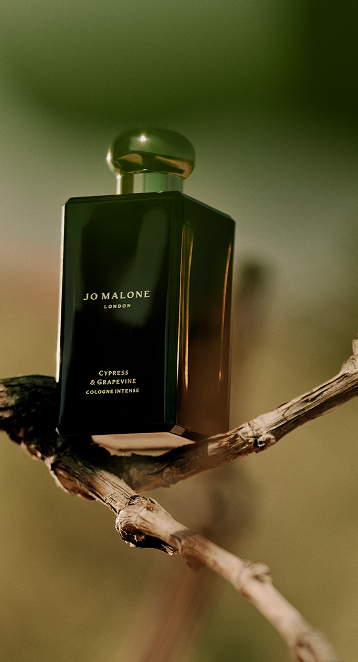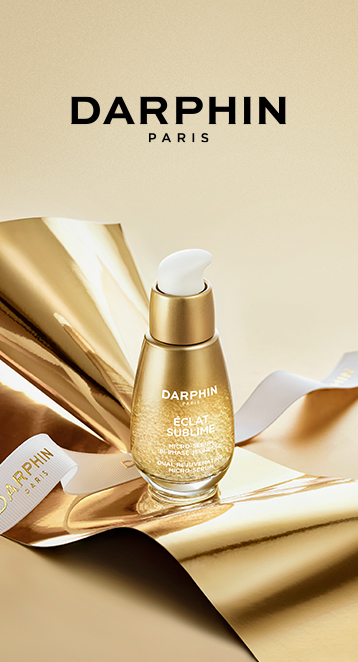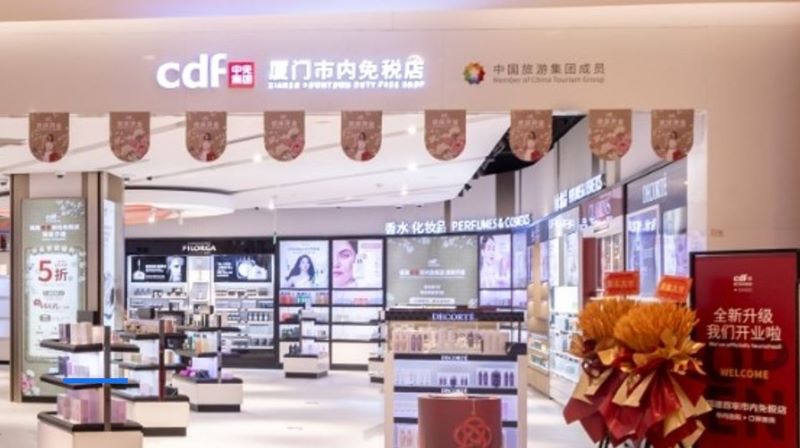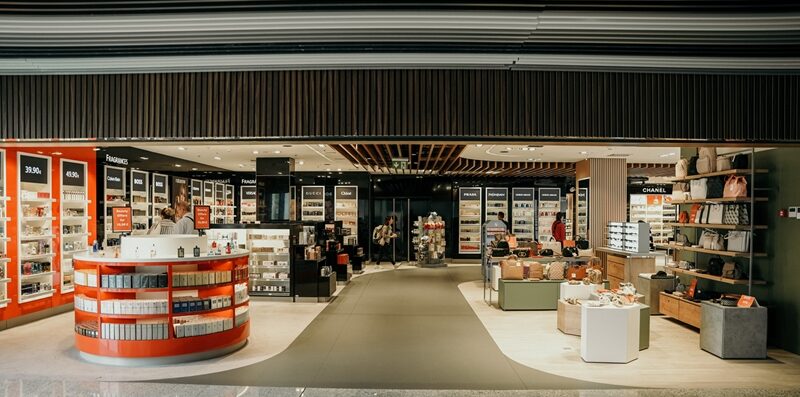Editor’s Introduction: As reported earlier, family-owned beauty to fashion group Puig posted net revenues of €2,585 million in 2021, a leap of +68% compared to 2020 and up +27% compared to 2019. Travel retail “suffered major constraints due to year-round travel restrictions,” noted the company.
In a statement Puig added that its target of €3 billion in revenues, originally to be hit in 2023, should now occur ahead of schedule in 2022. Puig is also targeting €500 million in EBITDA this year, also a year earlier than budgeted. The company reaffirmed its ambition to triple net revenues between 2020 and 2025.
In this interview, Puig Chairman and CEO Marc Puig talks about the performance in 2021, the key business drivers, the role of travel retail and managing a family company through crisis.

The Moodie Davitt Report: How do you reflect on these results in the context of the crisis, the new group structure and as part of the journey to achieving your targets within the three-year strategic plan?
Marc Puig: When we announced our results last year, after a difficult 2020, we said that because of the new portfolio we aimed to double the business in three years and triple in five. But those targets have been accelerated. 2021 resulted in a much better year than we anticipated for several reasons.
First, the business has rebounded with fury in several markets, led by the US, with the launches we have done resonating well, helping us to gain market share.
As the year advanced, and as people could socialise again, we saw this ‘revenge’ spending almost immediately. As soon as you have light at the end of the tunnel, people look to the possibility of travelling again in a way that they were unable to do for a long time. In markets like the US, we saw this in a big way in many consumer categories but particularly in affordable luxury such as fragrance.

Was it this ‘revenge’ spending that drove the US to become your number one market today?
For the past 10 to 15 years the US market was growing at best in low single digits. It was stable, it was predictable. All of a sudden it leaps forward [+104% in net revenues – Ed]. The question we have is what happens next? It continues to grow strongly but what happens next year or beyond? We are trying to understand more about this.

The growth of digital appears to have played a big role in the growth story, now at 28% of net revenues. Where are you on the digital journey as a company today?
Last year when we presented our strategic plan, we said that by 2025 we would have 30% from digital. Now we have already reached 28% so that will need updating.
In general people are becoming comfortable with this channel of business but having said that, it’s very different depending on the category and brand. In makeup or in other categories where it is very visual, the penetration is higher. With niche brands, where there is limited distribution, with high demand and scarce supply, online is an appealing channel.
You buy fragrances for three main reasons. You are loyal to that fragrance, you like to try new things each time or you are buying as a gift. If you are loyal it’s likely that you just want to replenish with a new one, either by walking through the store at an airport or pushing a button and doing it online. If you are trying new things, it’s more complicated, which is why we are trying new things (online) like fragrance profiling, testing options for people who can later buy a full bottle. Consumers are responding but it is a process.
As to the equilibrium between online and in-store, it’s not easy to tell. People do want to touch and smell, others want to do more online. We will go where the consumer goes.



Makeup and dermo-cosmetics are taking a greater share of the business today. What are the plans and strategy to further build these as elements within the business?
For many years we were very focused on the fragrance category. We were able to go from 3% market share worldwide roughly 15 years ago to nearly 9% last year. We doubled our penetration by doing things differently and disrupting the ways things were done.
We made a decision to enter those other categories in which we hadn’t previously participated. And as with fragrance, we only wanted brands in our portfolio that have a soul, a story to tell and that are different. We are very careful on which brands we choose, those that can disrupt the category. So far, both in makeup and skincare, we are making in-roads.

One of those disruptors was Charlotte Tilbury. Where do potential further acquisitions sit on your agenda today, notably in the journey to tripling net revenues?
It’s important to say that the tripling of net revenues is with the existing portfolio. We have accomplished a lot and are ahead of plan. We aim to be above the €3 billion figure this year.
So while we are busy with the house of brands that we have, we are also proactive in our discussions with brand owners that might make sense for us. Sometimes these things happen and sometimes they don’t but we are proactive.
Turning to travel retail, how do you see recovery shaping up as travel restrictions ease?
In the past, what we have long seen is that whenever there was a crisis in travel retail, the industry rebounded very quickly. This one is taking longer for sure. But as soon as travel becomes more normalised it will come back very fast.
We have been very supportive of travel retail and made some big bets in the channel with launches such as Paco Rabanne Phantom last year. The big advantage you have is engaging with the captive traveller who has time. It’s up to us to get them excited using the tools and the theatre at our disposal. In doing this, airports also have a part to play in encouraging differentiation, which appeals to the travellers. Once we have those travellers back, this channel will once again be a growth story for our business.
So far in 2022, if sales to our clients are an indication, it is recovering faster than we had anticipated at the beginning of the year. There will be an active Summer, assuming no further hiccups in travel.

Where does China sit today within your strategy, and within that, what role do you see offshore duty free in Hainan Island playing, for example for niche fragrances?
In 2021, the US was the largest market but China was the fastest growing [+212% compared to 2020 -Ed]. It won’t be long before China is a top three market for us.
Hainan was a big element of our China growth in the last couple of years. Some of this business was done before in duty free worldwide, or in Hong Kong, or in Korea, and has since been transferred to this island. The numbers we have seen are really mind boggling. We are all trying to assess how big this phenomenon is going to be and how to serve the demand there. Seeing how younger consumers respond to the niche brands, we wonder where the limit is, but so far, so good.

More widely, how does you see the world of travel evolving in a post-pandemic world?
We know that during the pandemic certain categories such as makeup dropped when there was no social interaction, while skincare is more of a daily routine. That is changing again now.
On the wider travel world, we may see some changes to business travel as so much can be done virtually, and people may need to justify travel more in the future. But there will still be a place for meeting physically. For leisure travel, I feel it will go back to where it was and we’ll see a big catch-up.
The company has also noted the benchmarks to becoming a leader in ESG in the sector – what are your next steps?
We are a family business and one of our mandates is to take the baton from the prior generation to build the business. And when we come pass this to the new generation, we need to make sure that they are proud of the company. So we ask ourselves, what do we need to do make the next generation engage?
Among other things, we have to respond to the Gen Z and Gen Y vision of the world, which includes serious concerns about the future of the planet.
So we have a mandate from the family, from the company, to be at the forefront of ESG because it is the right thing to do, but also because we have internal shareholders keen that we do a good job.
We have been on a journey and have accomplished many things already. Now we are accelerating in line with our commitments and have made a family member head of the ESG Committee at board level (see link for more on Puig’s commitments).
We are making sure that we deliver on our promises through measurements by different third parties.

You note the family ownership; from where you stand today is the intention to remain independent and family owned?
This is an industry where, if you have a strong brand, you generate cash. That has allowed us to grow organically and inorganically in the last ten years, during which we have made acquisitions worth €2 billion. So we have proven that we can grow at pace, and are comfortable with that.

Finally, reflecting on the past two years, from a personal point of view, what has it been like for you as a business leader – any big lessons learned? And how have those around you and your wider teams come through this most turbulent of periods?
The confinement was very tough here in Barcelona. We were three months stuck at home and for that time we had to stop the factories, the pipeline, the launches. At the same time we had just completed our biggest ever acquisition, and had made the biggest change in our structure as a family business. And through this it wasn’t clear when vaccines would come or when the end would be in sight. It was a busy period with a lot of change.
But the response from our teams was amazing and in that context we saw how much pride people had in belonging to this company.
I said last year that I had never worked so hard to lose so much money. Many people felt the same thing, doing more for less return. But we did have a sense of accomplishment at the end in what we achieved in 2021, which was remarkable.








